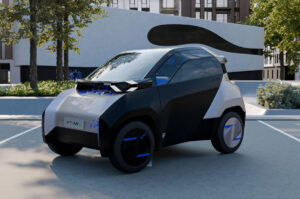Summary
- Toyota's Fuel-Cell Hilux prototype in the UK showcases hydrogen technology for practical, real-world utility and decarbonization.
- Toyota's "multi-pathway" strategy includes developing both fuel cells and hydrogen combustion engines for diverse applications.
Goodwood’s festival of speed isn’t just about noisy petrolheads and stunning classics — it’s where manufacturers quietly show the tech that could shape the next decade. At this year’s event Toyota put a pair of hydrogen projects on display, but the one doing the most practical legwork was a familiar face with a very different heart: a Fuel-Cell Hilux prototype built in the UK.

Toyota made ten of these prototypes at its Burnaston plant — five kept back for long-term testing, the rest sent out as demonstrators — and they’re designed to prove the concept in real world use. Each truck carries three hydrogen tanks, each holding 2.6 kg of hydrogen (so 7.8 kg overall), and Toyota says that’s enough for about 373 miles of range. That might sound like a small amount of fuel compared with a battery pack, but hydrogen stores a lot of energy for its weight — which means the Hilux can keep a healthy payload and towing ability while staying zero-emissions at the tailpipe.
Under the skin the system borrows heavily from Toyota’s Mirai fuel-cell know-how. A PEM (polymer electrolyte membrane) fuel-cell stack of 330 cells sits over the front axle and works with an electric motor-generator on the rear axle rated at 180 bhp and 221 lb-ft. A small lithium-ion battery in the load bed acts as a buffer: it soaks up regen energy and supplies short bursts of power when the truck needs to accelerate. It’s the hybrid-meets-fuel-cell approach — familiar, simple and designed around workaday utility rather than headline lap times.
Why does Toyota care about hydrogen for a pick-up? Two big reasons: refuelling speed and weight. Fuel-cell trucks can be topped up in minutes like a diesel, and because hydrogen stores energy more densely by weight than batteries, you avoid the mass penalty that comes with large battery packs — a major advantage for vehicles expected to carry kit, tow trailers or operate all day on duty cycles.
Toyota isn’t betting on a single hydrogen route. Alongside the fuel-cell Hilux, its engineers are exploring hydrogen combustion too. Racing prototypes have shown up — a GR-series Corolla and a GR LH2 racer — that run on compressed hydrogen or, more adventurously, on boil-off gas from liquid hydrogen stored at around −253°C. Instead of wasting that evaporated gas, Toyota’s system captures and feeds it to the engine: clever recycling in a harsh environment, and a good testbed for whether hydrogen can be used across motorsport and road cars.
The Goodwood demos underline a broader strategy: Toyota’s “multi-pathway” approach. The company is developing both fuel cells and hydrogen-burning engines, plus improving storage solutions (compressed and liquid). Racing and commercial vehicle programmes feed back into each other — lessons learned on the track or in a work truck can accelerate real-world progress.
Bottom line: the Fuel-Cell Hilux proves Toyota isn’t just experimenting in a lab — it’s building and running tangible prototypes in the hands of engineers and customers. If hydrogen can be made affordable and refuelling infrastructure scales up, a light, long-range, quick-refuelling pick-up with genuine payload and towing capability could be a very practical way to decarbonise commercial fleets. Toyota’s UK-built Hilux is an important step on that road.






GIPHY App Key not set. Please check settings